


























































































































































































































































































































































THURSDAY
FRIDAY
SATURDAY
SUNDAY
PARTLY CLOUDY
Hi: 52º
Lo: 29º
‘No one really expects it’: The map depicts the number of school shootings in the United States since the Columbine High School shooting April 20, 1999.

Source: Washington Post; Center for Homeland Defense and Security
VOL. 102 ISSUE: 27
EDITORIAL BOARD
Elissa Maudlin, Editor-in-chief
Evan Chandler, Print Managing Editor
Angelica Gonzalez Morales, Digital Managing Editor
Kyle Smedley, News Editor
Hannah Amos, Associate News
Editor
Daniel Kehn, Sports Editor
Corbin Hubert, Associate Sports Editor
CHANCE OF RAIN
Hi: 67º
Lo: 42º
PARTLY CLOUDY
Hi: 53º
Lo: 28º
MOSTLY SUNNY Hi: 50º



Lo: 38º
THIS WEEK: Dry for Thursday but shower and thunderstorms look to move in Friday afternoon into Saturday, along with windy conditions. A chilly day for Saturday with temperature falling throughout the day, but we warm back up for a mostly sunny Sunday.
The Ball State Daily News (USPS144-360), the Ball State student newspaper, publishes Thursdays during the academic year, except during semester and summer breaks. The Daily News is supported in part by an allocation from the General Fund of the university and is available free to students at various campus locations.
CONTACT THE DN
Newsroom: 765-285-8245
Editor: 765-285-8249, editor@bsudailynews.com
Lila Fierek, Lifestyles Editor and Copy Director
Mya Cataline, Associate Lifestyles Editor
Grayson Joslin, Opinion Editor

KwaTashea Marfo, Associate Opinion Editor
Amber Pietz, Photo Editor and Visual Editor
Jacy Bradley, Associate Photo Editor
Jacob Boissy, Video Editor
Olivia Ground, Social Media Editor
Alex Bracken, Visual Editor
Josie Santiago, Visual Editor Lisa Renze-Rhodes, Adviser
The Daily News offices are in AJ 278, Ball State University, Muncie, IN 47306-0481. Periodicals postage paid in Muncie, Indiana.
TO ADVERTISE
Call 765-285-8256 or email dailynewsads@bsu.edu between 8 a.m. to 5 p.m. Monday - Friday or visit ballstatedaily.com/advertise.


TO SUBSCRIBE
Call 765-285-8134 between 9 a.m. to 3 p.m. Monday - Friday. Subscription rates: $45 for one year. POSTMASTER: Send address changes to The Daily News, AJ278, Ball State University, Muncie, IN 47306.
TO DONATE
Visit BallStateDailyNews.com.
JOIN THE DAILY NEWS Stop by room 278 in the Art and Journalism Building. All undergraduate majors are accepted and no prior experience is necessary.
Waking Up with Cardinal Weather is Ball State University’s first and only morning mobile show focused on getting your ready for the day through local news, weather and lifestyle trends. Waking Up with Cardinal Weather airs every Friday morning at 8 a.m. at @cardinalwx live on Facebook.


Construction will begin May 2023 in North Dining for a new Chickfil-A location. The location has “an anticipated opening of January 2024,” according to the Ball State University Communications Center. The Atrium location in the Art and Journalism Building will remain open until November 2023. As of March 28, it is uncertain what will replace the Atrium Chick-fil-a location.


The Vatican said 86-year-old Pope Francis will remain in a Rome hospital after experiencing trouble breathing in the days preceding his hospitalization, though he tested negative for COVID-19. Earlier in the day, Pope Francis made his regularly scheduled appearance to greet the public and seemed to be in decent shape, although he reportedly winced when getting in and out of his vehicle.



Migrants in northern Mexico placed mattresses against detention cell bars and set them on fire March 27.
Video footage found March 28 shows guards walking away and making no attempt to release the men in the cells. At the time of the fire, 68 men from Central and South America were held in the facility, and 38 were killed.
Monday.
Hannah Allen was getting back into the flow of classes after traveling to a mock trial competition. She just returned from Michigan State University (MSU). After finishing her homework, Allen began to check her email when she saw the news. She received a newsletter from the New York Times, and that’s how she found out about the active shooter at MSU.
“I was like, ‘That can’t be right.’ I was just there,” Allen said.
She immediately reached out to her mock trial team and went into her sister’s room crying.
“It was horrifying to think about that I was just there, and everything that they must be going through, the anxiety of not knowing what’s going to happen [and] the pain,” Allen said.
While in the comfort of her sister’s room, with her thoughts racing, Allen made the decision overnight to plan a silent protest.
“For so long, I’ve been sending thoughts and prayers when everything happened at Uvalde and sending thoughts and prayers for Monterey Park and everything else,” she said. “I just felt like I needed to do something.”
The third-year English, psychology and prelaw student made the decision to honor Arielle Diamond Anderson, Brian Fraser and Alexandria Verner — the three students killed in the active shooter incident on MSU’s campus Feb. 13 — by standing out in Ball State University’s University Green for three hours the next day.
Allen stood outside wearing MSU’s colors — green and white — from 11 a.m. to 2 p.m. People walked past her expressing support and giving her encouragement.

As the MSU shooting was just one of many across the United States recently, Allen found herself thinking about the possibility of it happening at Ball State.
“No one really expects it to happen to us either, but we need to be prepared if it does,” she said.


Ball State University Police Department (UPD) Chief Jim Duckham said one factor that makes university shootings different to handle is size.
“Our geography, for instance, you have 100 plus buildings on campus,” Duckham said. “Whereas, in some of your other shootings, [it] may [be] contained to a particular location.”







When it comes to patrolling Ball State’s campus, UPD approaches it like a small city.
Another difficulty UPD faces is each incident has to be analyzed independently, Duckham said. Each incident will have a different response depending on what’s known and not known.
To help the Ball State community be prepared in the event that a shooting happens on campus, UPD has presented training videos during Welcome Week, except during 2020, 2021 and 2022 due to COVID-19, as well as offering videos on the Emergency Preparedness and Response Guidelines page on Ball State’s website.
On top of the videos, UPD does Civilian Response to Active Shooter Events (CRASE) training to help students and faculty learn simple, transferable skills for any dangerous situation. In this training, avoiding,
For so long, I’ve been sending thoughts and prayers when everything happened at Uvalde and sending thoughts and prayers for Monterey Park and everything else, and I just felt like I needed to do something,”
- HANNAH ALLEN, Third-year English, psychology and pre-law major
denying entry and defending yourself (ADD) is ADD was chosen over other training, such as alert, lockdown, inform, counter and evacuate (ALICE) and run, hide and fight, due to how accessible the acronym can be interpreted.
“If you’re mobility impaired, and I’m telling you the first thing you have to do is run, and that’s not something you can do, does that disempower you?” Duckham said. “So, I think I can teach anybody how to avoid a situation, and [avoid] means more to different people.”
Duckham advises students to be situationally aware, no matter the situation and to be aware of exits and know skills like first aid. He said people are “creatures of habit,” and breaking those habits, like taking a different way out of a building, can help with situational awareness.
Along with the training, which will help people if an incident were to occur before police arrive, Ball State has alert systems that send text messages or Rave alerts. To sign up for Ball State’s emergency alerts, go to the emergency alerts page on Ball State’s website.
In the event a shooting occurred on Ball State’s campus, UPD would work with the Muncie Police Department, Muncie Emergency Medical Services and the Muncie Fire Department, if the situation called for it, Duckham said.
He said UPD could potentially be a part of the response if an active shooter event occurred in Muncie Community Schools.
UPD works with Ball State’s administration on using education as a preventative tool with active shooter training and workshops.
“Nobody wants to think, ‘I’m going to come to college and learn about what to do if there is an active shooter,’ but we think it’s important to do it,” Ro-Anne Royer Engle, vice president of student affairs, said.
Information is especially important in an active shooter situation in order for students, faculty and staff to respond safely in a time of crisis, Royer Engle said.
She highlighted UPD’s CRASE training with ADD and run, hide and fight as “critical” basics students want at “the top of [their] mind.”
Royer Engle said students should be aware of preventative services available to report concerning behaviors seen on campus.
Michigan State University’s active shooter incident brings up questions on active shooter protocol at Ball State University.
No one really expects it to happen to us either, but we need to be prepared if it does.”
- HANNAH ALLEN, Third-year English, psychology and pre-law major
The rules of the telephone game are simple. Everyone sits in a circle. You whisper a message to your neighbor, they whisper it forward. The message becomes diluted and convoluted, changing as it goes. It becomes a game of “he said,” “she said,” “they said.”
It’s a game Max Shangle doesn’t want Ball State University’s School of Art to keep playing.
“I can’t play telephone, I don’t want you to either,” Shangle, the interim director of the School of Art, said to a group of students March 27 during a meeting addressing coming changes to the program.
The meeting, hosted by professors of the College of Fine Arts, took place in Room 225 in the Art and Journalism Building. A change has been confirmed and will be implemented starting with class registration for the fall 2023 semester.
Stacked classes will no longer be offered by the College of Fine Arts.
The strategy behind stacked classes, also called “taught with” courses, is to provide a semester of education to multiple classes.
The Ball State Daily News reached out to Academic Advising and the office of the College of Fine Arts to clarify what a stacked class is and the university policy surrounding it. Both offices directed The Daily News to Shangle. The Daily News visited Shangle’s office twice in person, as well as sent additional emails. Shangle said he could not provide answers to The Daily News’ questions by deadline.
Some students in the crowd voiced their fear this could affect their four year graduation plan, lead to a “watered-down education” and a decrease in the quality of their degree.
“Stagnant curriculum is unhealthy,” Shangle said when asked about the choice to change the current course set up.
“Change is inevitable,” Michael Lorsung, a sculpture professor, said. However, he “feels the changes are not in the best interest of students.”
During Monday’s meeting, Shangle began answering student questions and addressing concerns. In response to criticism about the dissolution of stacked classes, Shangle suggested a substitution during the meeting and gathering; independent studies will now take the place of stacked classes.
“The plan to reduce the number of instances of taught with courses is to bring the unit into Faculty Professional and Personnel Handbook policy alignment and to honor both the intention and widely held institutional practice of taught with courses,” Shangle said in an emailed statement addressing students. “Utilizing taught with courses as a means to address under-enrolled undergraduate courses in a single unit is NOT in alignment with the policy, nor is it in alignment with the intention or the widely held institutional practice. For reference, the School of Art is the only unit on campus that consistently utilizes taught with courses for these purposes.”
The Daily News reached out to Academic Advising and the office of the College of Fine Arts to clarify what an independent study class is and ask how frequently they are used as a course. Both offices directed The Daily News to Shangle, who said he could not answer The Daily News’ questions by deadline.
“It’s basically not the same quality [of education] ... It’s like they don’t want to admit they’re understaffed,” Hannah Schneider, thirdyear visual communications major, said about her understanding of independent study courses.
Schneider is also a representative of the David Owsley Museum of Art (DOMA) on the Dean’s Advisory Council. The Dean’s Advisory Council for the College of Fine Arts brings together two representatives from theatre, fine arts and DOMA departments. They help make decisions in the College of Fine Arts that affect students.
Schneider said she never received any information as a representative on any of the changes in the School of Fine Arts that have been proposed, especially the choice to remove stacked classes.
“I think these changes stunt the growth of current and future students,” Hana Spradlin, third-year intermedia arts major, said in response to interview questions over email. “As for substitutes for classes I think that it is unfair for us students to have to choose a class that wasn’t designed for the content that was intended in the classes we were actually supposed to take. I feel as though it is an excuse for the loss of credits, not necessarily the loss of experience that alumni or upperclassmen have gotten, or even that other institutions could offer.”
The Daily News reached out to a representative from the office of the College of Fine Arts to ask why the Dean’s Advisory Council was not included in the conversation. The representative referred The Daily News to the statements Shangle made the day prior, which did not address the matter. The Daily News also reached out to Shangle, but he said he could not answer The Daily News’ questions by deadline.
At the March 27 meeting, staff informed students of a proposal Shangle created.
The proposal would categorize two options, 2D and 3D art, instead of seven concentrations in the major. The proposal went to the College Curriculum Committee and School Curriculum Committee regarding Ball State’s School of Art.
The proposal was not approved. It had been in the works on and off since November 2022, Shangle said over a phone call.
“I want to affirm that we have not eliminated any courses or areas of study in the School of Art. Rather what you see are some changes in course schedule for the fall 2023 semester, including deviations from when courses have been taught in academic years,” Shangle said in an email statement to students of the School of Art.
On March 28, a gathering took place in front of the administrative offices of the School of Art, organized by Spradlin.
Originally, Spradlin set up a small meeting with Shangle to address concerns, hoping other students would come to offer support, but once news circulated through social media, the meeting became much bigger than anticipated.


I think these changes stunt the growth of current and future students.”
- HANA SPRADLIN, Third-year intermedia arts major
It’s basically not the same quality [of education] ... It’s like they don’t want to admit they’re understaffed.”
- HANNAH SCHNEIDER, Third-year visual communications major
Miscommunication and confusion about classes in the School of Art results in student gatherings to ask administration questions.
Interim Director of the School of Art Max Shangle speaks with students outside of his office on the 4th floor of the Art and Journalism Building on March 28. Students brought up concerns about academic planning and course offerings. OLIVIA GROUND, DN
and Sarojini Johnson’s private print collection makes its debut for the spring exhibit in Ball State’s David Owsley Museum of Art.
Madelyn Bracken ReporterNinety-two prints and even more not yet on display. A wild story: The David and Sarojini Johnson Print Collection made its first public debut at the David Owsley Museum of Art (DOMA) in late February, but there is so much more than the art.
The Johnsons are both artists themselves: David is a retired professor of 33 years, and Sarojini is still teaching printmaking at Ball State. This exhibition is not just random favorites, it is a collection of every era of printmaking.

“It shows a really personalized history of printmaking,” museum director Robert La France said. “The earliest one is from the fifteenth century, from the 1490s.”
The collection spans all the way through to modern printmaking, as the exhibit is housed in multiple separate rooms due to its size.
“There’s a huge variety of all very different styles, but it’s all very beautiful,” Misty Fox, drawing major and museum guard, said. “I was talking to some of my printmaking major friends
The funny thing about the whole deal is that I think to a lot of people art is money, and that’s pretty disgusting ... [People think] it doesn’t represent a beautiful drawer. It doesn’t represent an idea. It doesn’t represent a symbol, a souvenir from some old woman’s life. [Instead], it’s this many dollars.”
- DAVID JOHNSON,who are also interns here, and both of them said that it’s one of the best print exhibits they’ve seen in a while.”
The collection has yet to be on display in this capacity to the general public, this being its first time in the light of a museum.
“It’s like a hidden gem, hidden treasure,” La France said. “We’re really grateful they’re showing this to us.”
The Johnsons bought one of the prints titled “The Young Couple” by Kathe Kollwitz right after getting married.
“When I got married, my grandmother gave us $400 for a washing machine, and there was this thing called the Chicago Print sale,” David said. “They would set up in a hotel, and they would invite dealers from all around the world, and we thought, ‘Oh, we can go to the laundromat.’”
They bought a print every year that the sale continued, which was about 20 years. However, David’s collecting didn’t begin then.
“When I went to college the second time, I worked with a guy who had some [prints],” David said. “You don’t think about it being possible or accessible, but he had some [prints]. While I worked with him, he found some [prints] in a garage sale for $200.”
Not only did the couple collect, but they also advised at the DOMA, in a way. They formed a relationship with previous museum director Peter Blume, so he began to ask them for advice.
“One day, it was a Friday and 4 o’clock after my last class. He was at my office door, and he said, ‘They found an … etching. They thought it was lost in the bombing of [a] studio in Berlin, and it seems to be a rare proof before the steel facing. I think we should get it. If we get it, dealers will knock on our door!’” David said. “I said, ‘How much is it, Peter?’ and he said, ‘$16,000.’ I said, ‘Peter, I can’t even imagine spending $4,000 on a print.’”
After talking more with the director about various artists the museum should consider having in their collection, the director told David if he could find some of these prints, he would purchase them. And that’s exactly what they did.
While the Johnsons did aid the DOMA in gaining some prints, they also continued to build their personal collection, sometimes even coming in close contact with the artists they purchased from, such as Naoko Matsubara.
On a vacation to Toronto, the couple began looking in galleries for some of her work, knowing she was from the area. After visiting multiple galleries, the Johnsons were told Matsubara lived in Oakville and to call her.
After talking to her on the phone, Matsubara invited the Johnsons to her home, where they spent $300 on the artist’s work.
Many pieces in the exhibit have stories like these. When talking about the collection, however, David doesn’t think about how much money they have spent acquiring it.
“The funny thing about the whole deal is that I think to a lot of people [think] art is money, and that’s pretty disgusting,” David said. “[People think] it doesn’t represent a beautiful drawer. It doesn’t represent an idea. It doesn’t represent a symbol, a souvenir from some old woman’s life. [Instead], it’s this many dollars.”
The collection is now available to view for the members of the Ball State University community and the patrons of the DOMA.
“It was very nice to see artists who are professors here and just seeing what they’ve done and what they’ve collected over the years,” Fox said.

The exhibit began Feb. 23 and continues past the end of the academic year, closing May 21.

Contact Madelyn Bracken with comments via email @madelyn.bracken@bsu.edu.
When I got married, my grandmother gave us $400 for a washing machine, and there was this thing called the Chicago Print sale ... They would set up in a hotel, and they would invite dealers from all around the world, and we thought, ‘Oh, we can go to the laundromat.’”
- DAVID JOHNSON, Print collector



























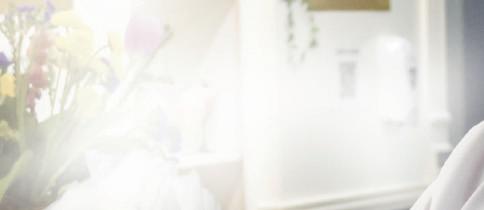





David Arquette, famous actor and producer, will be visiting Ball State to speak in the David Letterman Distinguished Professional Lecture and Workshop Series. He will be in Pruis Hall April 10 at 7 p.m. David Letterman’s series was established in 2008. This event is free and open to the public, and tickets can be purchased on Eventbrite.
The Minnetrista is hosting a glass Easter egg hunt in the Oakhurst garden. The event, happening April 1 from 10 a.m.- 1p.m., allows families to buy glass eggs or any other glass figures for $20 and have them hidden in the garden. The glass figures are sold at the Annual Spring Glass Sale made by the Ball State University Glass Guild.






The “Mad Hatter’s Drag Party,” taking place on International Transgender Day of Visibility, is set to be held in the L.A. Pittenger Student Center Ballroom from 8-10 p.m. Doors open at 7:45 p.m. According to Spectrum’s Facebook, those who need accommodations should contact the organization. International Transgender Day of Visibility has been recognized since 2009.

Jernigan, owner of Danielle’s Popcorn, uses her business to encourage Muncie youth to find a love for reading.

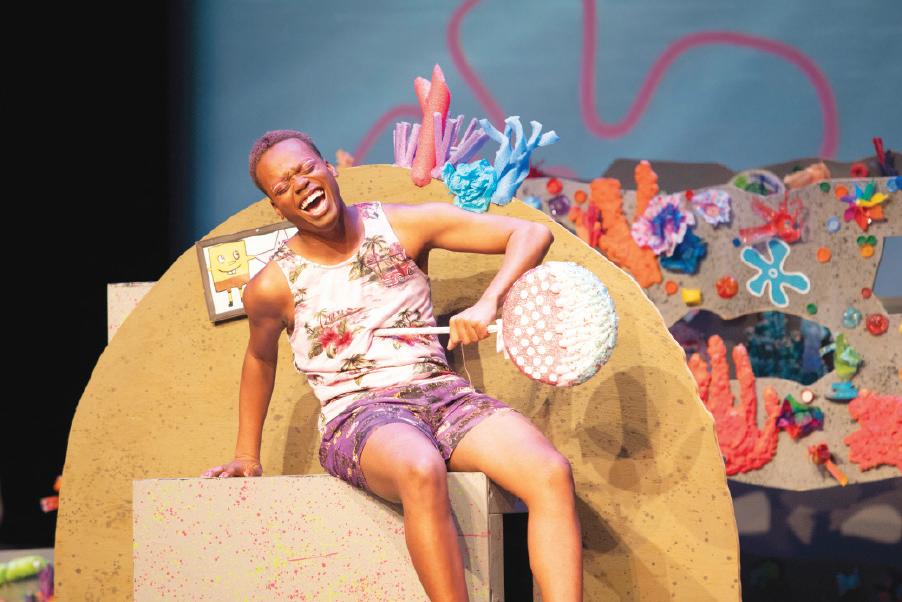


Continued on Page 10

The unmistakable crunch and warm, buttery smell of the common movie snack has been a staple for thousands of years, and people have since found it is also a great base for diverse flavor combinations.
The Muncie Mall is home to a variety of shops, and beginning the weekend before Martin Luther King Jr. Day, a new business opened bringing with it a strong but familiar aroma.
Danielle’s Popcorn is attracting growing attention due to its variety of gourmet popcorn flavors. It has options for people with a sweet tooth and those who want a more savory experience.



The owner and creator, Danielle Jernigan, grew up in Muncie and is a Ball State University graduate. She highly values education and her community, and she uses her three businesses to fuel students’ enthusiasm for language and learning.
Jernigan’s passion for food flourished during her time as an undergrad student when she heard about a Muncie Black Expo event, which supports the social and economic development of AfricanAmerican people.
Jernigan left Indiana about seven years ago, but
I am really passionate about the young kids because they’re so innocent, and they’re so impressionable, and I feel like if I can play a part in helping these kids read books or grow, I feel like I did something else besides pop popcorn.”
before she left, she emerged into the food business. She got her start doing fish fries, which she was well known for. She has learned a lot since her pop-up tent at the Muncie Black Expo, and she continued her practice in Texas, before her return to Indiana at the beginning of the pandemic.
She was determined to improve and continued to go to events. One day, she met a man at an Anderson Black Expo event that told her if she wanted to sell more, she needed to make something that would appeal to kids.
“He brought me to his truck, and he showed me the funnel cakes, and he showed me the Oreos,” Jernigan said. “And he said, ‘Look at this line. These parents are here bringing their kids, and you have a good product, but you don’t have anything for the kids, so you’re missing out on money, little sis.’”
She said that is when she thought about trying funnel cakes. Once this new business model was set into motion, it didn’t take long for parents and their children to start lining up.
“I took his advice and put my spin on it because, a lot of times, you have to make it your own,” Jernigan said.
She offers funnel cakes in various unique flavors including red velvet, peach cobbler and s’mores, one of her personal favorites.
“People love all the color stuff. Even at the fair, we were the small tent,” she said. “The big shots were coming all the way to our side to take pictures of our menu and pictures of our stuff.”
Since Jernigans got her start with the fish and funnel cakes, she has dropped the fish due to the expenses and increase in competition. She now specializes in a variety of different areas. Danielle’s Bistro is the primary entity, and Danielle’s Funnel Cakes and her most recent addition, Danielle’s Popcorn, are DBAs, or doing business as. This means her popcorn and funnel cake businesses are pseudonyms, which allows her to operate within one organization.
Kenya Harless is an employee at Danielle’s Popcorn and admires Jernigan’s positive outlook and empathy for the people around her.
“I love working with Danielle because of her business knowledge, ambition and instructional style leadership,” Harless said. “She is charitable and loves her community.”
Her favorite thing about working at Danielle’s Popcorn is that she simply enjoys what she does.
“I like working for a local, small-owned business and helping provide a place of employment for our community,” she said, “[also,] learning new things
Danielle has impacted them in some way. In a little over two months, Danielle’s Popcorn has received almost 50 Google reviews, and every single one is five stars. Muncie resident Jonteonna Tucker and Jernigan favor the same popcorn flavor, Sweet Heat, but the popcorn wasn’t the only thing that made a lasting impression.

“The staff is wonderful. [I’ve] never had a bad visit,” Tucker said. “Another thing that really got to me was it’s a Black-owned business. When you see something like that, it brightens my day. My first visit, Danielle and her husband were there. They were so sweet and respectful.”
Tucker has returned since her initial visit and brought some people along to experience the gourmet popcorn. She had a movie night with some friends and knew Danielle’s Popcorn was a great treat for the occasion.
Jernigan was raised by a single mother of four, and growing up, a lot of emphasis was placed on her education. She was pushed to focus on her grades during her time spent in Muncie Community Schools. She was also taught from a young age that quitting wasn’t an option.
“We were always taught, ‘Your education is your
During Jernigan’s senior year, she got pregnant with her daughter, Au’lise Balfour. While she and her family were devastated about what this meant for her future, Jernigan was still determined to pursue her education.
“When my mother was younger, she didn’t get to go to college because she had children, so it was really important for me to still go and follow through,” Jernigan said. “My mom really instilled in me the spirit of not quitting.”
Throughout her life, the emphasis placed on education and commitment has caused these values to manifest themselves through her business. She encourages kids to develop a passion for learning and push through difficulties in school with her Pop Open a Book reading program, which rewards children for reading with popcorn.
4See CARE, 10
The staff is wonderful. [I’ve] never had a bad visit. Another thing that really got to me was it’s a Blackowned business. When you see something like that, it brightens my day. My first visit, Danielle and her husband were there. They were so sweet and respectful.”
- JONTEONNA- DANIELLE JERNIGAN, Owner of Danielle’s PopcornTUCKER, Muncie resident
Continued from Page 09
“We have a real problem in our community. … And as a community, people aren’t making as much money as they should or could,” Jernigan said. “When people are poor or they fall into that category, if you do not pursue your education or pursue some kind of skill, you may repeat that cycle.”

Jernigan understands how hard it is to pull yourself up because she has experienced that struggle in her own life.


“I had to do some work to be able to escape that poverty line. And more importantly, I did it with a baby, and I did it with some tenacity and this thing called don’t quit,” she said.
Jernigan wants to ensure K-5 kids have the opportunities she had growing up as a student at Garfield Elementary School.
“I didn’t really feel limited as a child. I felt like we could run to the moon if we wanted to. The sky was the limit, so we didn’t have a lot of restrictions as to who or what we could be,” the culinary professional said. “I do hate when people are limited because of finances, especially kids. I want all kids to have really great opportunities because I didn’t have everything, but I had a whole lot of non-tangibles.”
Jernigan hopes through this program, she motivates the kids to appreciate their education and what it can do for them. She invests in the students and inspires them through language, which aligns with the intent she has for the impact of her businesses. She feels it’s essential to speak life into the kids because they remember when they’re supported, but more importantly, they remember when they aren’t.

“I am really passionate about the young kids because they’re so innocent, and they’re so impressionable, and I feel like if I can play a part in helping these kids read books or grow, I feel like I did something else besides pop popcorn,” Jernigan said.
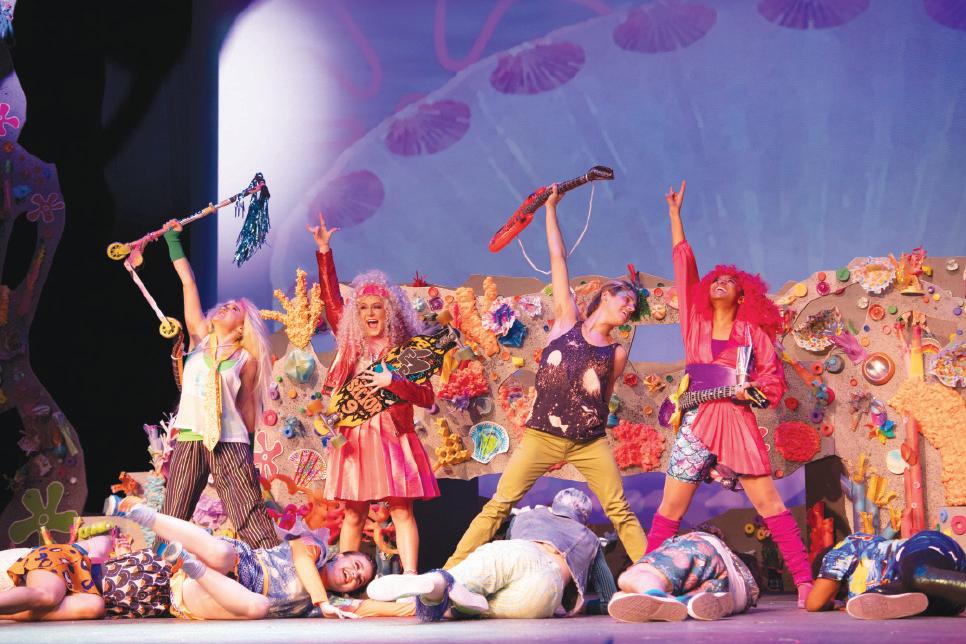
Danielle’s Popcorn, along with Jernigan’s other two businesses, will soon have a new home in downtown Muncie. They will be posting updates over the next month, and she looks forward to continuing to grow and support the community.
Contact Ella Howell with comments at ella.howell@bsu.edu or on Twitter @ella_rhowell
 Lilly Dorton, who plays Pearl Krabs, performs the “Bikini Bottom Boogie” alongside castmates during “The Spongebob Musical” March 23 in University Theatre. OLIVIA GROUND, DN
Lilly Dorton, who plays Pearl Krabs, performs the “Bikini Bottom Boogie” alongside castmates during “The Spongebob Musical” March 23 in University Theatre. OLIVIA GROUND, DN










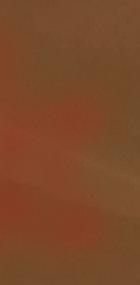






Nick Elam’s rule change for the end of basketball games has found its way into mainstream basketball.12

score added with a predetermined number of points — wins the game. Leagues choose whether to implement the Elam Ending during the fourth quarter or overtime.
his basketball idea to reality.
What began as an idea between his friends watching March Madness soon turned into a 300page book with one major takeaway: get rid of the clock in the waning moments of the game.

As Elam grew up, he noticed how basketball operated when going into its final minutes; the only way a trailing team could stay in the game is if they deliberately and continuously fouled their opponent in an effort to extend the game.
The first time Elam and his friends talked about this “glitch in the system” was in 2004, and they were all in agreement; they did not like how the game flow was ruined by the incessant fouling.
Elam proposed what would become the Elam Ending; during the fourth quarter, the clock is turned off (it can be turned off for the whole quarter
outdated,” Elam said.
After publishing his findings for the first time in 2007, Elam spent a decade sending his 60-page PowerPoint to many leagues and tournaments, seeing if any of them would show interest in the Elam Ending. It would be a decade before the Elam Ending saw its first user, when The Basketball Tournament (TBT) implemented the system on a trial basis in 2017 before committing to the system full-time the next year.
Since then, interest in Elam’s idea has grown, with the National Basketball Association (NBA) using the Elam Ending under the name of ‘Final Target Score’ for their All-Star Games beginning in 2020. The NBA’s feeder series, the G League, is currently doing a trial run with the Elam Ending for overtime periods for the 2022-23 season.

2017
The Basketball Tournament uses the Elam Ending at their Jamboree play-in tournament, making TBT the first organization to use the Elam Ending.
After refining his concept, Nick Elam publishes “Time’s Up for Basketball’s Game Clock,” detailing what would become the Elam Ending for the first time.
“Experimenting with our final target score at NBA All-Star competitions and in the G League has given us meaningful insight into both the benefits and drawbacks of the format,” Evan Wasch, NBA’s head of basketball strategy and analytics, said.
Sixteen years after first bringing his ideas into the world and with his first child on the way, Elam said his journey is “only beginning.”
One idea was to punish the fouling team more harshly at the end of the game, and while this would make the option less appealing to the trailing team, he concluded it would not have given “[the losing team] a better option to try to come back in the game rather than fouling.”
The quest to solve this problem took three years until on March 10, 2007, Elam had his breakthrough moment.
Elam noted with a clock present at the most critical point of a basketball game, “both teams are more preoccupied with manipulating the clock.” Therefore, with the clock removed, the game returns to a more fluid and athletic pace and style. With no clock, Elam said the game becomes less predictable and creates more suspense.
Elam categorized games by whether they played with a clock. Some sports, like tennis and volleyball, play without a clock and accumulate points quickly. When basketball was in its infancy at the turn of the 20th century, it was a low-scoring game. Over time, though, scoring increased.
Throughout 2007, Elam refined his ideas before publishing a book, “Time’s Up for Basketball’s Game Clock,” introducing the Elam Ending to the world. With his idea now out in public, Elam began the tough work of convincing others in the basketball world his idea had merit.

Years passed, his emails were ignored, but he always thought he was “one day away from a breakthrough.”
The breakthrough would come a decade into his journey when TBT became the first organization to incorporate the Elam Ending in their games.
Dan Friel founded TBT with Jonathan Mugar in 2014. Friends since childhood, Mugar was a comedy writer, while Friel was an assistant U.S. attorney; the duo took a leap of faith to pursue TBT together.
Canadian Elite Basketball League uses the Elam Ending on a trial basis for their Summer Series; they became the first league to use the Elam Ending on a full-time basis.
TBT expands the Elam Ending to be used in all games going forward.
The genesis of TBT began with the idea of doing a single basketball game for $50 million; however, the idea transformed into a single-elimination tournament, similar to the NCAA basketball tournament, for a winner-take-all prize of currently $1 million.
This is
NBA uses the Elam Ending for the first time in the NBA All-Star Game Feb. 16.
The G League, the NBA’s developmental league, begins to use the Elam Ending on a trial basis for games that go into overtime beginning in November (at the start of the 2022-23 NBA season).
TBT adapts the Elam Ending to soccer through The Soccer Tournament, a 7-on-7 version of soccer.
“We didn’t think there was anything between the NBA and college basketball that filled that desire among the sports fans,” Friel said.
Elam had heard of TBT, and he noted the highstakes nature of the tournament, how they “like[d] to push the envelope” and how they are considered “trendsetters” due to concepts such as the bracket celebration finding its way into mainstream basketball culture.
In August 2016, Elam sent his 60-page PowerPoint about his hybrid-duration ending to the founders of TBT.
Mugar saw the email Elam sent and immediately recognized the benefit the Elam Ending would have on their league, Friel said.
“We needed something to differentiate TBT from other events,” Friel said, “so this was really a great opportunity for us to try to implement this rule that [Elam] had come up with.”
With the founders of TBT interested in the concept, Mugar sent an email back to Elam. Mugar said the ending was “brilliant.” Then Elam got the news: TBT would be trying out his hybrid-ending
it still uses basketballs designed with Elam’s signature in its annual tournament. RYLAN CAPPER, DN
duration during the 2017 Jamboree, the play-in games for the main tournament.
Elam realized his concept would be in good hands in TBT. Many collegiate and professional players had played in TBT before, such as 2007 NBA draft first overall pick and Indiana-native Greg Oden, 2012 NBA Slam Dunk Contest champion Jeremy Evans and 2011 NBA draft second overall pick Derrick Williams.
“I knew that … the concept was going to be tested at a high level of play,” Elam said.

1. Nick Elam’s primary sport growing up was baseball, even playing the sport on a club team at the University of Dayton and being a junior varsity baseball coach while teaching.
2. Elam’s all-time favorite athlete is Cal Ripken, Jr; one of the reasons is that the two share a birthday, Aug. 24.
3. When Elam released “Time’s Up for Basketball’s Game Clock” in 2007, he received a handwritten note from sportscaster Jim Nantz voicing his approval for the system.
4. In 2019, Elam supervised a class of students who completed their student teaching in Germany.
5. Before the Elam Ending was implemented, Elam spent a few years as an analytics contributor for the Washington Wizards.
not only a great way to finish, but it can actually salvage meaningless games.”
- MIKE MORREALE, Commissioner and CEO of Canadian Elite Basketball League

2017: Philadelphia- The first Elam Ending
2020: Chicago- NBA All-Star Game
2020: St. Catharines, Ontario, Canada-


CEBL used the Elam Ending
2021: Atlanta- NBA All-Star Game
2022: Cleveland- NBA All-Star Game
2022: Las Vegas- NBA G League used the Elam Ending in the fourth quarter at Winter Showcase
2023: Salt Lake City- NBA All-Star Game
2024: Indianapolis- NBA All-Star Game
In between getting his doctorate from Miami University (Ohio) and starting at Ball State University, Elam traveled to Philadelphia in June 2017 to see his system used for the first time. The system was in TBT Jamboree, a playin tournament for teams wanting to play in TBT. Elam remembered having high hopes, but he was also worried the weekend could be the beginning of the end of his decade-long journey.
By the end of the first day, Elam saw what he was hoping to see. One game went to sudden death. Another game saw a team overcome a 14-point deficit.
“All the different things that I had hoped to see, I got to see on the first day,” Elam said.

As he left Philadelphia, he thought, “This is not the end of this concept, … this idea has life to it. This project has life to it.”
Friel thought so as well. He noted as the games inched toward their target score, the defensive intensity ramped up the “palpable” energy in the arena.
“It’s the possession that counts,” he said. “It’s not the clock.”
With the success of the test run in the summer of 2017, TBT decided to implement the Elam Ending into all games from the 2018 tournament forward. For Elam, the games were now speaking on his behalf with regard to the Elam Ending.
Friel remembers the reaction the Elam Ending got. Despite some initial skepticism, the fan reaction was largely positive.
“It’s easy to be a … cynic, but when you see the Elam Ending live, and you see the exhilaration that everybody has when they actually win these games, it’s impossible for people to discount it,” Friel said.
Players on and off the court also had a positive reaction to it. Chris Paul, Phoenix Suns point guard, was a big fan of TBT, particularly the Elam Ending, so he suggested implementing the idea to NBA commissioner Adam Silver.
Afterward, Paul, then-president of the National Basketball Players Association, brought up the idea to his fellow players. After further conversations, the Players Association came back with their answer; they wanted to use the Elam Ending.
Sources: Elam Ending Innovations, The Basketball Tournament, Canadian Elite Basketball League, National Basketball Association
In a Cincinnati airport in January 2020, Elam was about to board a flight to Florida when he got a call from the NBA commissioner’s office.
In that conference call, they told Elam they acknowledged late game play in basketball was flawed, and the Players Association saw a lot of merit in an untimed ending. They then told Elam his system would be used in the upcoming AllStar Game in Chicago, and Elam was invited to see his concept used for the first time in the NBA.
“I was just over the moon,” Elam said.
Next came the 2020 NBA All-Star Game where the Elam Ending was used for the fourth quarter.
“We saw probably the most competitive and intense quarter of basketball in any All-Star Game in history,” Elam said. “It was an electric atmosphere.”
Just like its debut for TBT in 2017, the Elam Ending received highly positive reviews after its showing in Chicago.
“I looked on Twitter to see what the reactions were … it was easily 90 to 95 percent positive feedback about the format,” Elam said.
The concept of a clock in basketball is really outdated.”
- NICK ELAM, Assistant professor of leadership education at Ball State and originator of Elam EndingJOSIE SANTIAGO, DN DESIGN
Like other people in the basketball industry, Mike Morreale, Commissioner and CEO of the Canadian Elite Basketball League (CEBL), first heard about the Elam Ending through its successful implementation at TBT. Morreale said he saw the sport as “not really locked into the traditional ways of doing things.”

Morreale noted how with a traditional basketball game with four quarters of timed play, close games can take a lengthy amount of time to end.
“Who wants that?” Morreale said. “Especially [winning] a championship on something like that.”
Morreale first met Elam through TBT’s Jonathan Muger, and after a conversation with Elam, Morreale wanted to implement the Elam Ending in the CEBL.
“Every one of these decisions that he’s created are based on data, right?” Morreale said. “We knew that he had certainly done his homework evaluating … thousands and thousands of games [of basketball]. It was more like how do we convince people that this is not hokey, that this actually makes sense and the only way to do it is to actually do it?”
The CEBL’s implementation of the Elam Ending was significant for multiple reasons; compared to TBT, which is a tournament, the CEBL is a league, making the Canadian league the first league in the world to implement the Elam Ending. Also, the CEBL is affiliated with the International Basketball Federation (FIBA, after the French translation of the name), the worldwide governing league of basketball.
The CEBL first used the Elam Ending in the 2020 CEBL Summer Series, the pandemic-postponed season which was transformed into a tournament.
The CEBL uses a system of the Elam Ending similar to the one used in TBT; when there are four minutes remaining in the fourth quarter, the next dead ball results in the clock being turned off. A target score is then set, which is the leading team’s score plus nine points.
Morreale said the Elam Ending was a “hit right off the bat.” The players told him they loved the concept, and the players said they wanted the ball in their hands to win the game and also to be defending the shooter, so the game didn’t end. Through “clean[ing] up the ending,” Morreale said it gets down to a backyard style of next bucket wins in basketball.
“This is not only a great way to finish, but it can actually salvage meaningless games,” Morreale said.
In October 2022, Dan Friel, alongside the other organizers of TBT, announced The Soccer Tournament (TST), a spin-off of their successful single-elimination tournament. The tournament, which is a modified 7-on-7 version of soccer instead of the normal 11-on-11 and played on a smaller field, will use a version of the Elam Ending adapted for soccer. Friel had the idea to implement the Elam Ending to soccer because he thought scoring in the sport was “too infrequent.”
“I think the biggest question is whether you have enough scoring in a short period of time to make that work,” Friel said.
Friel created the spinoff due to the “appetite” for single-elimination, high-stakes events like the NFL playoffs and the FIFA World Cup.
“I think soccer is obviously right for that type of opportunity as well,” Friel said, “so there are other opportunities to do something similar, and other sports will definitely pursue that as well.”
The CEBL is continuing with the Elam Ending for the league’s fifth season this year, and Morreale said the league is bringing instant replay review for fouls committed during the untimed portion of the game.
“It’s becoming more mainstream, and it certainly has benefits, but I think in FIBA, it may take quite a while longer, if ever quite frankly,” Morreale said.
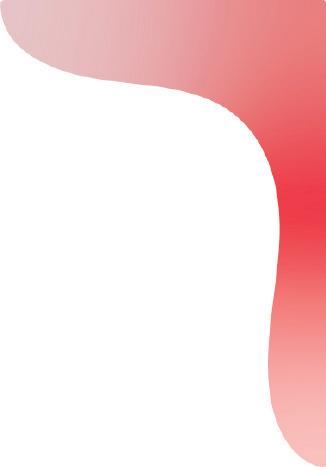
Wasch said that even though the NBA has no immediate plans to implement the Elam Ending for regular season or playoff games, the leagues does expect to use the format in “different settings as part of our continual testing and learning process.”
Elam places the chances of his rules making it to NBA regular season games as “very high.”

“All the momentum has been forward momentum with the concept, sometimes not as fast momentum is what I like, but it’s always been forward,” Elam said. “I think that forward momentum is going to continue at some point where we will see it at the NBA level.”
In February 2024, the NBA All-Star Game will return to Indianapolis for the first time since 1985. This game also has significant importance for Elam; 20 years after he had his first conversation with his friends about the “glitch in the system,” his concept is being played in his backyard of the marquee event of the world’s largest basketball league.
He is looking forward to Indianapolis hosting.
“They know how to do (basketball) and do it right.”
Contact Grayson Joslin with comments at Grayson. joslin@bsu.edu or on Twitter @GraysonMJoslin.
It’s easy to be a … cynic, but when you see the Elam Ending live, and you see the exhilaration that everybody has when they actually win these games, it’s impossible for people to discount it.”
- DAN FRIEL, Co-founder of TheBasketball
Tournament









Social organizations have constructed a way of not being inclusive to new people, making some feel invisible.




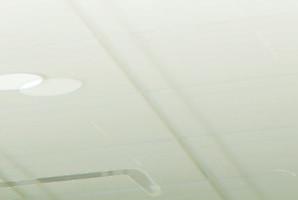


Keeona Stewart is a third-year theater creation option major and writes “Stay Present” for The Daily News. Her views do not necessarily reflect those of the newspaper.
When I was a little girl, I was a shy, introverted person who was always afraid of making friends. Everybody, including my family, told me I was a special girl, and I was different from the average person. For a long time, it was hard for me to believe that. If I was “special,” would I have friends who think this way? It wasn’t very clear at the time.
I realized the more I try to please the people who didn’t like me for who I was, I was never actually happy. I made a shift in my life. I was open and ready to talk to people and make new friends. However, I learned something the hard way; everyone is not always what they seem to be or who you think they are.
When you watch movies like High School Musical, Glee, all of these TV shows and movies where you see the example of a clique, one person can dream and hope to be a part of a group of people who all seem to get along, who are really close and to have a best friend within that friend group.
A clique is a group of people who share the same interests and views and opinions, according to Nursing Management. I’ve dealt with many cliques, and they haven’t always made me feel included and valued.
As a theatre major, I know firsthand how society believes we are strictly about inclusiveness and amiability; we are a very diverse group of people doing different things, and the theatre community is about helping each other out in different aspects of performance lanes.
There was a time when I was open to being involved in theatre more in high school. This was back when I was in a play with at least 20 to 25 people. In the beginning, we were all introducing ourselves and getting to know one another. Seeing that most kids were new to the whole thing, they talked to some of the people who had been in the program longer. They would talk and have fun with that person for the duration of the time. However, when the play was finished, it was like that individual was playing the part of the Invisible Man.
It was like the people I worked with didn’t even want to interact me anymore. They would just say, “Hi, good to see you.” Afterward, they would see me walk away with other people from the play. They wouldn’t even ask me, “Hey, are you doing anything? Because I would like to hang out with you again.”
It was like they were only interested in hanging out with me for one time, and they never wanted to talk or be associated with me again. That feeling of your self-esteem and confidence being shoved and mocked right in front of your face.
It just makes you question your personality, the way you talk to people, and the way you present yourself around new people. The question repeating in my head was, “What did I do?”
Even though that person apologized, it still felt like that individual didn’t want any association with me.
Another time this happened was two weeks after the play. The girl I had talked to for the duration of the play, I recognized her from the corner of my eye, spotted her, and said, “Hey, good to see you. It’s been a while.”
She said, “Yeah, I hope you’re doing well.”
There was a long pause of silence until I walked away and headed to a table where nobody was sitting. She saw me sitting by myself and walked over to the table I was sitting at, and she asked me, “Hey, do you want to come and sit with some friends of mine?”
I said, “Sure, why not?”
It was nice she acknowledged I wanted to sit next to somebody, but the voice inside my head was telling me something didn’t sit right. I sat down, and there were a group of people crowding around the table. They were all talking and laughing. I tried to talk and get into the conversation myself, but then, they were just talking around me and not even noticing me at the table.
Whenever I would try to say something, they would either talk around me or just look at me like a stranger. The only thing I heard from each one of those people sitting at that table was a simple “Hello.” Then afterward, they were all gone and walked away from each other.
I felt like I was kicked down so badly. It felt like I was chopped liver in a can. Whenever I would talk, they would give me a certain look. They would look at me like I was a complete stranger.
Whenever I was trying to talk to the people around the table, wanting to introduce myself, they would talk in a different tone of voice. Very blunt, in a brushed-off kind of tone. The second I stopped talking, those people would sound and talk in a different way.
Every burning question about yourself comes boiling up to the surface.
attend and do together?
I remember being heavily involved in many social organizations and making plenty of friends and acquaintances throughout my time in college. From dodgeball to kickball, all of the people in those clubs came from different backgrounds but also wanted the same things. They wanted to meet new people, have fun and not exclude a single person and make them feel small.
But outside of those organizations we were a part of, we do many social interactions, like go get lunch and dinner on campus, go for a walk around campus and go out to eat. We talked nonstop about anything that came to mind firsthand, whether it was something funny and random or serious and insightful.
Then, there was this desire to join other social organizations, only to hear people asking me questions about why I wanted to do that.
The question is, “Why would you want to join that club? Why would you want to be friends with those people when you’ve got cool friends like us?” They were all into different things than I was. Those questions and the commentary made me think and question.
If those people were really saying those things to me, then maybe I don’t belong here.
When you say to your friends about another organization that could possibly spark their interest and their passion, they will either be supportive of it or just completely go into asking questions or judging you for doing something they are not really into. They could even think differently of you, like saying you are ruining or abandoning our “clique” by joining people who are not like us.
What did I do? Was it something I said? Or something I did?
It’s all the questions you wish you didn’t have to ask yourself. My self-confidence and self-esteem were all questioned at once.
In today’s world and environment, there should be more inclusivity and more acceptance of one another. We should be celebrating each other’s flaws and differences instead of just looking at one flaw and purely judging and shunning people off of that one flaw.
Everybody doesn’t have to be friends with everybody, but if someone is talking to you, they should at least show an effort to care and communicate with you.
Even worse, those people could be saying mean or unnecessary things behind our backs, spreading gossip and rumors. When this behavior occurs, it resembles a clique forming or already happening.
Why is it that whenever we meet new people in a social organization, they have certain criteria on how to talk to people, how to behave around them, and the kind of activities and events they must
Being a part of a group of friends means you should also grow and evolve your friend group and not exclude other people for various thoughts and opinions about them. When it comes to meeting new people, you don’t have to act a certain way with one person, let alone everybody you may talk to.
You’ve heard that old saying: never judge a book by its cover. In this case, it’s true.
If you happen to have a big group of people you talk to regularly, nothing is wrong with wanting to include people who are different. Loving and accepting everybody’s quirks and differences are the new kind of social clique.
Cliques as a whole can be a hard stigma to break away from. People often feel like they need to act or behave a certain way in order to feel validated by a specific group of people.
People can like others for who they are and what they do; they have the ability to be friends with everyone and not be confined to one big pool of people who hold a certain reputation.
Contact Keeona Stewart with comments at krstewart@bsu.edu.
Loving and accepting everybody’s quirks and differences are the new kind of social clique.”
Whenever I would talk, they would give me a certain look. They would look at me like I was a complete stranger.”
Continued from Page 04
“There is information we receive through the students of concern reporting, where anybody can report concerning behavior that a student may be displaying at any one point,” Royer Engle said.
The team, called Behavioral Intervention Team (BIT), includes staff from multiple areas to assess the behaviors of the student from each prospective area included on the team.
In addition to educating students and faculty, Royer Engle stressed the importance of taking public emergency notifications seriously in order to keep people safe and allow the appropriate people to respond effectively in an emergency.

It is through these measures, Royer Engle said, the community can be safer.
“We know we have trained people to respond, [people] have access to information on our website, [we] have a law enforcement agency and first responders trained to respond to this,” Royer Engle said. “[We] have the staff in place to respond if or when these things happen, and [we] have a BIT team and multiple ways to be able to [collect] information about concerning behavior [in students] ... those are the things we can reasonably do to be able to help keep the community safe.”
Ball State President Geoffrey Mearns also spoke on the importance of preventative measures being in place before an incident occurs. One he mentioned is the BIT team; however, he said the team is limited as they can only identify problems arising in their jurisdiction.
“The unfortunate thing about the shooting at [MSU] was that [the] shooter had no relationship with campus ... Those are the ones that are the most challenging because there’s no way to predict that that person would come to your campus,” Mearns said. “That’s why having these other mechanisms in place to try to identify a person who’s exhibiting behavior might give you some sense that there’s a risk emerging ... so that if it does materialize, you’re prepared.”

If an incident such as a mass shooting were
to occur, there are many factors to be taken into consideration in the aftermath. The Ball State Counseling Center has an important role to play with managing mental health in the wake of such an event.
“I think the goal for responding after some kind of traumatic event is to help students learn to manage the emotions and the memories that are tied to that,” Bill Betts, director of counseling and health services at Ball State, said. “So that they don’t keep them from sort of functioning and help them kind of understand and put in context the event, so they can move forward.”
However, as Betts went on to explain, different situations can change how the department would respond. He also said university administration and police have systems in place to prepare for such events.
“I do think the university is well prepared to respond to things,” Betts said. “I think [UPD] is one of the best police forces I’ve ever worked with. I think administration at the university has a lot of plans and mechanisms in place to really support the needs of campus and would be ready should something happen.”
The importance of getting the right information about events such as school shootings is important, Betts said. He highlighted the importance of “reputable sources” and “accurately assess[ing] your risks.” He advised students to not scroll through social media posts relating to school shootings.
There have been 13 K-12 school shootings with injury or death in 2023, according to EducationWeek, with the most recent being March 27 in Nashville, Tennessee.
Allen stated the importance of “remembering the victim’s name over the person that committed the tragedy.”
Police identified the victims as Evelyn Dieckhaus, 9, Hallie Scruggs, 9, William Kinney, 9, Cynthia Peak, 61, Katherine Koonce, 60, and Mike Hill, 61.
Contact Hannah Amos with comments at hannah.amos@bsu.edu or on Twitter @Hannah_ Amos_394. Contact Abigail Denault with comments via email at abigail.denault@bsu.edu.
Continued from Page 05
Students came with questions, comments and concerns for the administration. Some students brought signs saying, “You can’t reduce the tradition” and “Remember your roots,” referring to the current concentrations of the school.
Shangle addressed the concerns of those in attendance, as did the associate dean of the College of Fine Arts and associate professor of Dance, Christie Zimmerman.
A major concern to those who participated was the lack of communication from the administration to teaching faculty and students in the school. Students proposed the idea of creating a Canvas page for the school where announcements like the choice to remove stacked classes could be shared. Shangle said he will look into the idea.
Students and faculty present at both the March 27 town hall and the March 28 gathering asked about creating a student advisory committee for the School of Art. Student advisory committees exist for other schools, such as Theatre and within the College of Science and Humanities.
A student advisory committee did exist in the School of Art at one point, however, Shangle has said multiple times the advisory committee has never existed since he took on the position in July 2022.
Shangle said he is open to starting one again if students are interested.
Students in attendance at both events were also concerned about the lack of clarity in scheduling
for the upcoming semester, as well as the continuation of their academic career. Shangle and Zimmerman urged students to discuss these concerns with their advisers.
Students also voiced interest that their academic advisers were not well-versed in the educational plan of art students.
“To be clear, advisors are not assigned by unit, they are assigned by caseload,” Zimmerman said during the gathering. “What you all have the benefit of is one academic adviser who only advises School of Art students, and because of the number of School of Art students, there are other advisors who can pick up some of that case[load].”
Shangle and Zimmerman told students they will be having meetings in the coming days with each concentration to ask for input on what classes are needed and how they can support the concentrations.
“We hope to offer some continued conversations by student cohort and/or concentration in the coming days and weeks, and once I have had a chance to organize these with our School of Art advising team, I will be back in touch to let you know the details,” Shangle said in an email statement to students.
Shangle and Zimmerman told students with additional concerns to reach out to them for oneon-one meetings.
Contact Meghan Sawitzke with comments at meghan.sawitzke@bsu.edu or on Twitter @MSawitzke. Contact Olivia Ground with comments at olivia.ground@bsu.edu or on Twitter @liv_ground_25. Contact Andrew Hopkins with comments at andy.hopkins@bsu.edu.
47 Numbered rds. in a city
48 Stirs in
49 Time off, briefly
51 Completeness
54 Rhythmic foot
56 Hebrew prophet
57 Relaxing resort
60 “I expect more from you”
62 Start, as a computer, and what each answer to a starred clue has?
64 Retired, as a professor
65 Orders for regulars


66 2022 documentary about actor and activist Poitier
67 Weed with stinging hairs DOWN
1 Pic takers
2 GI sought by MPs
3 __-chic: 37-Across-influenced style
4 Alias letters
5 Next gen
6 *Small child, facetiously
7 Song segment
8 Concert device
9 Chimney grime


10 *Endangered cat that turns white in winter
11 Improvise on stage
12 Takes five
14 Grassy yards
16 *Salad of corn and black-eyed peas that originated in Texas
19 Helpful push upward
21 Anti-vaping spot, for short
22 Sci-fi robot
24 “Can you repeat that?”
25 Baby grand, e.g.
26 *Sleeping option that lacks a box spring
29 Swiss mountain
32 *Cinnamon roll with currants
33 Inflexible
34 Looks like
36 Licoricelike herb
39 Acorn tree
41 Wombs
Pick up the tab

